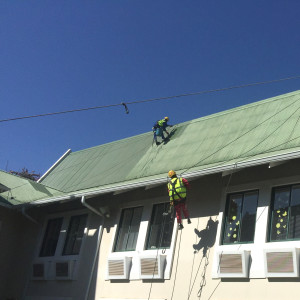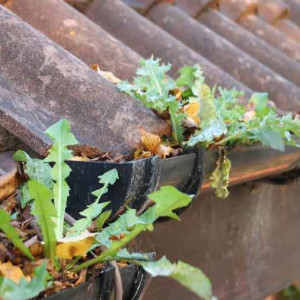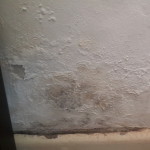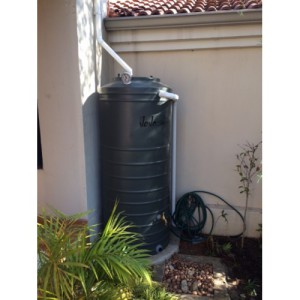Our summer rains have started and here are five tips we suggest to help prepare your buildings for the rainy season and protect your family, home, employees and possessions.
1. Inspect your Roof 
Walk around your home’s exterior, inspecting your roof to make sure your roof is in good condition. Do this at least twice year to avoid costly problems that could escalate into a much greater expense.
- Inspecting the roof from the ground, look for signs of damage, sagging, and aging.
- Check for skew, lose or missing tiles and for any cracks in the chimney. Missing roof tiles means your roof is directly exposed to adverse weather conditions.
- Look for cracks along the ridge of your roof and along parapet walls. Damaged mortar joints on ridge capping tiles will result in roof leaks
- Inspect the valleys of your roof (the area of your roof with a downward slope). Make sure that any flashing does not have any holes or rusty spots.
- Take notes of any possible problem areas or areas in need of closer inspection.
- If any issues are found, contact us SA Damp or a reputable contractor as soon as possible so as to avoid moisture leaks inside your home that can weaken your wall and/or ceilings.
2. Inspect your Gutters 
Gutters are an essential part of your roofing system. The purpose of the gutter is to collect and funnel away any water that lands on the roof, taking water away from the building’s foundations, protecting your exterior surfaces and stopping water from entering the home. Read about why we recommend your building needs gutters. If water penetrates your home, woodwork can perish, mould will begin to grow, condensation forms and brickwork will erode. Damp patches quickly spread and health problems could become an issue.
- Ensure the guttering outside your home isn’t broken or leaking.
- Clear out any leaves or other debris. This will reduce the risk of blockages during heavy rain, which could cause your guttering to overflow and create problems for your home.
- You can use a trowel to scoop out debris which is clogging your gutters, or purchase a cleaning tool specifically designed for your gutters that attached to your hosepipe.
- Additionally check that there are not a lot of little granules collecting in gutters and down-pipes. Finding granules is a good indicator that your roof’s coating needs to be resealed and painted. Contact us SA Damp or a reputable contractor as soon as possible to avoid further damage.
To reduce the risk of blockages there are preventative measures you can follow. Tight-fitting wire mesh or plastic caps are available to fit most types of down-pipe. They allow water through but trap leaves and dirt
3. Inspect the inside of your buildings 
Check all windows and doors. Make sure that both close and seal properly, and make any repairs or improvements as necessary. Inside your home, check out your ceilings to make sure that you are not experiencing signs of roof or other leakage. Be on the lookout for water rings, mould or dark spots and trails. Wall or ceiling discoloration could also be an indication that there is a problem. Black mould spots on your curtains or fabric could also indicate damp or a high moisture content in the wall. If you stumble across any of the above, it would be pertinent to contact us SA Damp or some other professional for expert advice.
4. Surrounding Trees and Foliage
It would be prudent to consider cutting back any trees and foliage that hang over the house and gutters as their branches and leaves will most likely cause blockages and guttering problems. Additionally it will reduce the risk that they will fall during a storm and damage your home.
5. Collect and recycle water 
Consider installing a rainwater collection tank to help you harness the potential of your home to provide its own water, and cut unnecessary waste. We really only need the expensive municipal water for drinking and cooking. Most household water we consume is to; flush toilets, wash cars and water plants and gardens. Rainwater is perfect for filling your pool, watering the garden or washing cars and dogs. Collection tanks come in different sizes and can be connected to you guttering system without much effort. Some tanks have built-in pumps so you could connect it directly to you garden sprinkler systems.
Contact us today for a FREE professional consultation.
Get a Free Quote Contact Us
Call us now on 011 467 7600 | 011 791 0925








